
Le Freak
Produced by Paul Fagamalo for Fine Fatale
Creative Director Mario Faumui
Lead Choreographer Amanaki Prescott-Faleta
Costume Design Sam Samau
Lighting Sam Mence
Music operator Isaako Ah Kiong
At TAPAC, 100 Motions Road, Pt Chevalier
From Tuesday 17 November, 2015 to Thursday 19 November, 2015
At 7.30pm
‘O le fogavaʻa e tasi.’
First, let’s clear one thing up. While this is labelled a ‘workshop showing’ there is little, from an audience perspective, to warrant the ‘workshop’ tag. The artists may still see it as a work in progress but, on one single viewing, there seems little that could improve the work apart from, perhaps, a few extra runs for confidence – and that’s a big ‘perhaps. Personally, the professionalism that ‘Fine Fatale’ is already known for, shone bright and I found the work to be deeply satisfying on every level, physical, emotional, intellectual and artistic. Had we viewed this as an already ‘run in’ production at the Edinburgh Festival or as part of NY Pride it would still have been a stand out work.
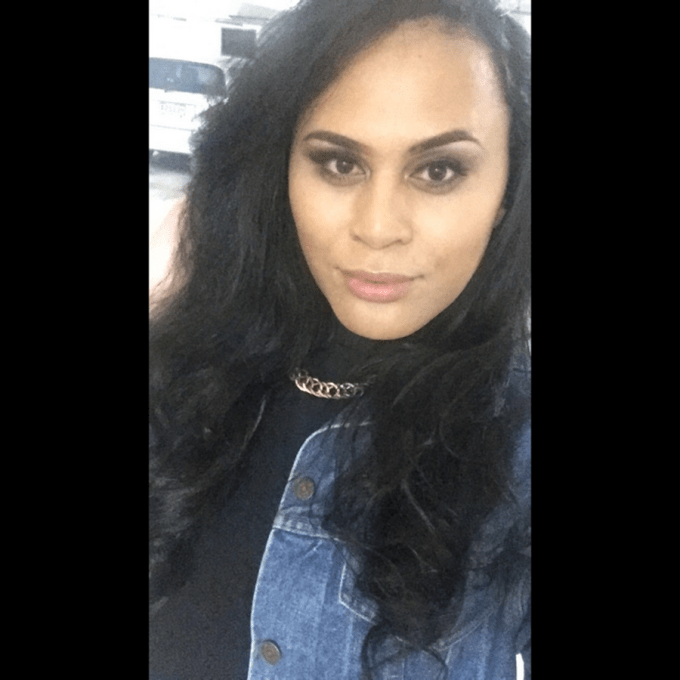
Admittedly, when I sit down to write a review – and here’s where I get contextual which doesn’t please everyone but, hey, I’m an academic and a practitioner so what would you expect – I make a set of considered decisions as to what lens – or assortment of lenses – I will view the work through. In the case of ‘Le Freak’ the lenses I have chosen can exist in a vacuum, they can be viewed separately and exclusively, side by side, and consecutively – the ‘gaze’ of the hypothetically dispassionate reviewer who only brings him or herself to the table – or they can be viewed from a more intersectional perspective where an apt metaphor might replicate a visit to the optometrist were, to find my own distinctive clarity as regards the work, I need to line them up, lens upon lens in multiple layers, to find a centre that I can relate to creatively, critically, fervently and retrospectively yet remain, where necessary, detached. If I take this approach my criticism could achieve a curious authenticity that it might not otherwise attain. But enough about thinking about thinking about reviewing. I’m sure you’ll understand.
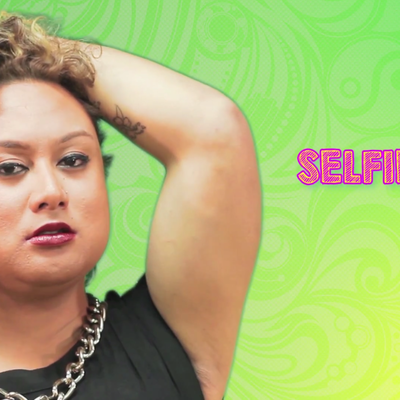
‘Le Freak’ is what we see in front of us, what we experience, but it’s also a complex amalgam of much, much more than that, more than, I dare to suggest, most other works of performance art that you will ever see. It’s of great credit to Faumui and Prescott-Faletau then that this is also a simple and accessible work, easily available to the one time viewer who has no context at all. It’s playful, splendidly performed, thought-provoking, disturbing and very, very funny. It‘s carefully disguised complexity becomes apparent as you start to deconstruct the multiplicity of cultural frameworks that scaffold the work and the layer upon layer of overt duplicity required by these young artists to exist in their communities at all. Hence the name ‘Le Freak’ and the relevance of the clutch of profound responses given by the dancers when asked ‘what makes you a freak?’ As might be expected they’re pretty ‘in your face’ responses, each underpinned by a clear understanding that ‘freak’ is exactly how each artist self-identifies and equally how they feel society labels them. The gaze turned inward can be a vicious and cruel thing. Beni Morrison makes it clear ‘I’m a freak because I choose to be’, Valentino Maliko owns it with ‘Hush it honey, your words don’t mean a thing – I got this’ while co-director Amanaki Prescott-Faletau says simply ‘You do! You choose to see me as the ‘freak’. Booboo Kitty, this is my normz.’ (Booboo Kitty, for the uninitiated, is ‘a name for a bitch that ain’t special.’
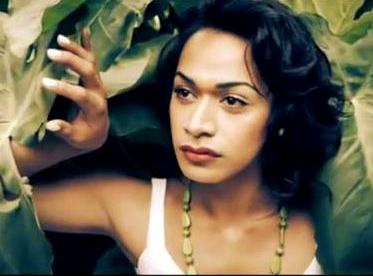
Years ago, the LGBTI community as it was then, reclaimed the word ‘queer’ by redefining ourselves ‘queer’. In more recent times, the gender diverse communities have begun to do the same with ‘freak’. I’m a happy freak which means I’m not alone. I can call myself and my fellow travelers ‘freak’ but if you do, you’ll get a slap!
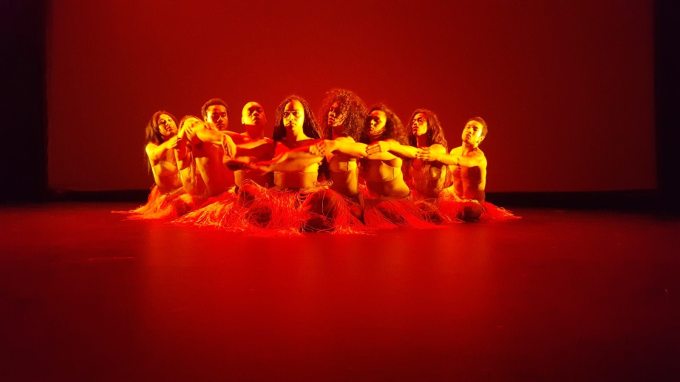
It’s all a trick though. Just as the antithesis of ‘Pride’ is shame, the essence of ‘freak’ is anchored in a deep personal sense of dissimilarity and we live in a space where we are the regular target of institutionalised violence, hatred and discrimination, of our own self-loathing, our own self-harming and if we own anything at all it’s expressed through the statistics which show 40% of us have attempted suicide at least once, and our need to celebrate our dead, those who have died by violent acts perpetrated by others, on ‘Transgender Day of Remembrance’, 20 November (tomorrow in fact) every year.

I have already suggested that the ‘freak’ nom de guerre is a trick and nowhere is this more apparent than in ‘Le Freak’ itself but if you look at the interface between the content and the artistry you’ll find what I have already called the ‘overt duplicity’ of both the production (and the performers). There’s a self-assurance and a synchronicity that borders on the arrogant, a beautiful and fully justified chutzpah, in ‘Le Freak’ but what does this overt self-confidence camouflage? There has to be something or history is a big, fat fibber, but in fact, there’s not a glimmer of self-sabotage anywhere in this finely thought through work so I guess my answer has to be ‘I simply don’t care.’
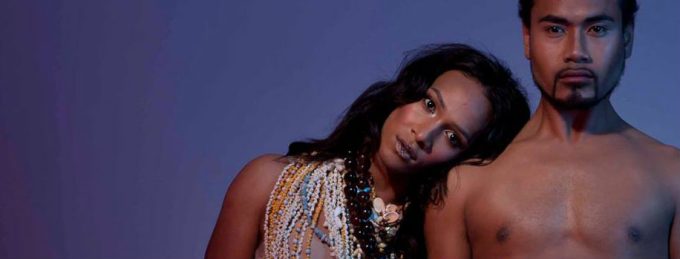
As for the cultural lens, the overlays are profound as are the various coatings of privilege. The visible culture is Pasifika but there’s Maori in there too. The western borrowings are all to do with theatrical presentation – it’s a room, there is a stage and lights and the audience sits in the dark and observes. Apart from the occasional splinter-sized pause in the action where we try to fit in some well-earned applause, the work is largely continuous with a sprinkling of ‘we don’t really care whether you get it or not’ from the artists which I must admit I find immensely attractive. The humour is a fusion of brown madness, self-deprecation and blatant theatricality and the audience both expected and appreciated it.
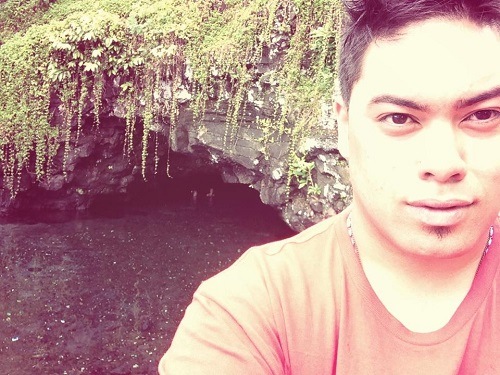
There are cultures within cultures too. The pakeha-dominated, multicultural milieu will always be paramount – that’s a no-brainer – but how you’ve learned to love ti tiriti will determine where is this ethnic hotchpotch you’ll place these performers. Just where, in a bi-cultural country, where the founding partnership is between tangata whenua and the rest of us, do these artists sit? Then there’s Pacific Christian culture and the power it exerts in migrant island life, there’s the distinctive and wonderful South Auckland culture with its obvious links to the US and the African American music scene, there’s the tense, generic ‘queer’ thing which in itself is a scrambled as the acronym we use to try to describe ourselves, until finally we get to the raft of cultures that exist within what we loosely call ‘the transgender community’. How do we square that circle, how do you, in fact, square all of these circles when trying to fathom just how this bunch of disparate people came together to make this stunning piece of art.

I can view ‘Le Freak’ authentically through a queer lens, a transgender lens, a performing artist lens, a conceptualiser lens, even an academic, ex dancer lens but, despite all that ‘authenticity’, I can’t view it through the eyes and experiences of a young, straight transgender woman of Maori or Pacific descent, or a gay, PI man from South Auckland. It doesn’t invalidate my lens, it simply nullifies one part of it. All this posits, and makes us re-evaluate, the question ‘what is a review’ because what I see as an older, same sex attracted transwoman is different to what you see as a cisgender, white straight person and maybe, just maybe, that’s actually what it’s all about.
This brings me to a really interesting (in my view) point: does it really matter if the lens we look through when we critique a work is blurred, biased or even totally busted? Perhaps this, in itself, is a perfectly credible perspective, but I think I need to think more on that. One thing’s for sure, we all need to record and critically analyse what we see in front of us because that’s the job. That’s the job.
We’ve been fortunate in Aotearoa New Zealand to generate a seemingly endless flood of exceptional dance talent whether it’s the infinitely capable classical work of the Royal New Zealand Ballet Company, the gone but never-to-be-forgotten revolutionary genius of ‘Limbs Dance Company’ through to, in more recent times, the arcane Butoh brilliance of Lemi Ponifasio and ‘Mau Dance’, the passion and eccentricity of Neil Ieremia’s ‘Black Grace’, the seemingly inexhaustible talent of Douglas Wright in any of his iterations, Michael Parmenter’s bold, experimental machismo, the subtle exoticism of ‘Atamira’, the important esoteric niche mined by Okareka Dance Company right down to the quasi-orgasmic virtuosity of Mary Jane O’Reilly’s ‘In Flagrante’, each contributing in its own matchless way to our often punishing cultural landscape.
No, I haven’t forgotten our enormous achievements at successive ‘World Hip Hop Championships’ where we’ve won the Mega Crew division three times (‘Royal Family’ 2011, 2012 & 2013), the Adult Crews division twice (‘Request’, 2012 and ‘The Bradas’ 2015), the Varsity Crews division three times (the incredible ‘Sweet and Sour’, 2008, ‘ReQuest’, 2009 and ‘Sorority’, 2011) and the Junior Crews twice (‘Bubblegum’ in 2011 and 2012). Without wanting to brag too much (but I will) this is an outstanding record, says so much for what’s happening in our schools and community centres and feeds talented and experienced young dancers into the burgeoning number of professional contemporary dance companies that pop up regularly in our cultural spaces.
To the above list of star vehicles add ‘Fine Fatale’. They’re not altogether new having been nurtured in the hothouse of imagination and creativity that is PIPA (Pacific Institute of Performing Arts) and founded in 2013 by graduates Mario Faumui and Amanaki Prescott-Faletau who bring a whole new meaning to self-expression. They’ve performed on the Pacific Dance Triple Bill as part of TEMPO Dance Festival (2013), the Southside Arts Festival ‘Urbanesia’ (2014), and as featured artists in consecutive Auckland Pride Festival Gala presentations in 2013 and 2014, so they certainly put themselves about. Not only in dance works either, but as key performers in ‘Teen Faggot’s Come to Life’ (2013), Victor Rodger’s ground-breaking plays ‘Girl on a Corner’ (2015) and ‘Club Paradiso’ (2015), Amanaki Prescott-Faletau and Leki Jackson-Bourke’s award-winning ‘Inky Pinky Ponky’ as well as quite a number of other dance, spoken work and fusion productions.
Yes, there is an elephant in the room – or maybe I should say ‘welcome Nifoloa!’
Almost all of the listed groups have considerable – if not entire – Maori and Pacific Island influences right at the cutting edge of artistic decision making – and in performance – yet little of this important knowledge seems to have penetrated the academic arts and I think it should have. Maybe, as palagi, I’m not the right person to do this but I’d certainly like to initiate a deeper discussion of this phenomenon and why this might be so. In 2011 I set myself the task of recording a five year window on the performing arts in Auckland through reviews and this period is almost up. I have personally generated over 150 individual reviews during this five year window and to date more than twenty of those have been of Pacific and Maori performance works and all would feature in my top 50 if I were to grade them in this fashion. There is a seemingly magical fusion of western modes and styles and innovative Maori and Pacific approaches, some traditional some contemporary, and at the centre of this powerhouse of modernity is a robustly unique brand of Pacific queer theatre, and ‘Fine Fatale’ are unashamedly at the forefront of this movement.
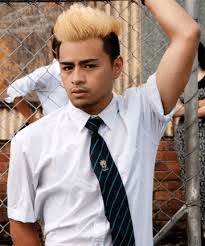
TAPAC isn’t my favourite venue. It’s nebulously impersonal – fishbowl like – until you get into the performance space and then it’s much more comfortable. Identifying as transgender and working as an activist more often than not equates to wandering about with a target on your back, front and sideways and yesterday was one of those days when the target I wore was more than abundantly used. I arrived feeling battered, bruised and more than a trifle raw from a long day of social media assault and looking forward to an evening of sitting in the dark and being fed emotionally by people who are like me, and so it turned out to be. Thank you, Doctor Theatre! Once seated, the house rapidly filled with Maori and Pacific performing arts royalty along with a ragtag and bobtail bunch of white honkys like me and my whanau. The mood was exquisite, the craik likewise, and I was kissed hello by more gorgeous men than it’s reasonable to mention.
The stage was bare except for a blue wash, criss-crossed by a stretched, grill-like gobo. It’s a classy-as, clean and simple setting that we seem to collectively love, and ignore. The house lights dim quickly and hand-held lights descend the stairs to the stage inventing and eliminating shadows that expose and hide the bodies that have soundlessly appeared in the darkness. It’s effective and there follows an instant motif of running on, slapping, faces perhaps, and running off. It’s purposefully difficult for us to see what the dancers are wearing and the whole thing has a ‘rust never sleeps’ look about it. There are intimidating silences, there is clapping, there is singing (‘Send me the pillow that you dream on’) with celestial harmonies and the entire opening quickly deliquesces leaving one solo dancer (Valentino Maliko) visible. I’m already thinking ‘this is the most exciting thing since Chris Jannides and Friends morphed with the sublime talents of Mary-Jane O’Reilly in 1977 and became Limbs Dance Company.’ Contemporary dance in this country was changed forever on that day and here we have a radical new company that looks more than capable of doing the same. It’s déjà vu all over again.
The enigmatic nature of the opening is seamlessly transformed into energetic clapping and slapping accompanied by exotic yips and yelps and we get our first clear look at the company. I’m excited by the emphasis on the body various rather than the body conventional and certainly expected nothing less. Dame Ninette de Valois would be horrified with me but, on this occasion, queens outrank dames so ‘hard luck, Ninny!’ There’s a parody, and somewhat camp, haka and some beautiful playing with gorgeous long hair before the dancers find themselves travelling in repetitious circles with a delicious heel/toe slide that subsequently becomes a motif for travelling throughout the entire 60 minute performance. Just as the sequence looks like devolving into (intentional) exhaustion we end in an Iwo Jima-like tableau vivant at the centre of which is Maliko as though worshiped by the whole crew.
There’s an incredibly subtle – and very new – physical vocabulary throughout, which is exhilarating, and we see it first in the ensuing sequence which involves the most stunning hands and arms I’ve seen since 1998 when I watched the baby ballerinas of the Kirov Company dance ‘The Nutcracker’ at Covent Garden on Boxing Day. The piece is synchronised to perfection and is simply remarkable. We want to applaud but the drive through the show is such that there is no space and eventually we settle back and let go of this rather silly palagi convention.
The use of multimedia imagery and spoken word is striking but minimally used and for this I am personally grateful. This is a company more than capable of sustaining our interest and, in fact our admiration, through the purity of their dance and I admit to being a classicist when it comes to having dance front and centre in dance shows. If you’re a dance company, dance. End of story.
The next sequence begins with the recorded words ‘your first experience always begins with your Auntie’s red lipstick’ and a more evocative opening it’s hard to imagine. The graphics – huge on the cyclorama – are magical. The dancer, wrapped in the most beautiful tapa cloth, weaves and undulates in front of the screen and, as she moves her hands in upward waves, squares of classical island patterns seemingly exit her fingers and slide into place above her until the entire screen is filled with them. It’s a brilliant concept and magically fulfilled. The tapa is removed in a delicious undressing and laid on the ground to become a blanket for Tekeepa ‘I’m not a freak; I’m a baldy’ Aria to kneel on. Aria ‘makes pretty’ with a small cosmetic kit while behind her plays what is effectively a beautifully shot, short expressionistic film. There are crucifixion images, a woman in white, and a team of black clad, angry, snarling women and there can be little doubt that jealously, resulting in horrific bullying, is the theme. The effect is one of intense disquiet and the action on stage follows suit. Shadowy figures, in sequence, bump, push, jolt and thump Aria while a disembodied male voice sings the David Crowder Band hit ‘How he loves’ until the dancer’s body is completely wracked with sobs. The physical manifestation of the bullying is focused on the head and the repetitive action of pushing the face and making it turn away is most challenging to watch. It’s unforgiving stuff and I suspect put together and performed by a group of artists who know this situation very well. On the way home my son said that this was the piece he respected the most. ‘I won’t say I liked it’ he said, ‘but it was powerful and disturbing.’ He’s thirteen with same sex parents. We left it at that.

Perhaps the most extraordinary feature of this segment is the manner in which the expressionist moving images and the symbolism around the bullying are perfectly melded into one powerful naturalistic montage.
The penultimate section is immediately upbeat and wildly colourful – to hell with a managed segue – with bright patterned sarongs taking the place of the earlier more sombre and shadowy tans and creams. Two tables appear and there is a sense of an antithetical Last Supper. Hands are prayerful and the beats have an exotic Middle Eastern flavour. There is blindfolding with what looks like a tea towel – there are, in fact, many tea towels – and, for a few moments, it’s like being a witness at the trial of ‘Josephine and Her Amazing Technicolour Tea Towels’ and it’s all great fun. The towels become weapons and there is a lot of in-sync hitting but, in the midst of all this carefully choreographed mayhem, there are also beautiful serial motifs of faces framed with hands, with objects, and, again there are the hands, now prayerful, always these enchanted hands. It’s evocative, esoteric and beautiful and it seriously – and strangely – feeds my love of both the hijab and the burqa as emblematic symbols of contemporary women’s traditional dress.

There’s a ‘final round’ and Ronda Rousey lives for a moment before we’re told it’s time to ‘take off all your makeup – including the eyebrows’ – and suddenly we have further reasons for the tea towels with the last actor tidying up the last few clearly using excerpts from the book ‘1001 Ways to Pick up a Tea Towel Without Bending Down’. Pretty damn fine footwork, girl, churr.
There’s a beautifully ordered fan dance, heavily percussive, and the physical dynamism, followed by the symmetry of the ending, is quite simply outstanding. The boys (Valentino Naliko and Daniel Tanuie) are wonderful young dancers – virile, strong, passionate and intellectual – while the girls are, without exception, beautiful, talented and extraordinary. From time to time there is a hint that the chicks know about more about being the guys than is comfortable but, if that’s a resource they’re comfortable using, then so be it. Raukawa Tuhura and Prescott-Faletau are exceptional talents and have proved this time and again. Khloe Lam Kam is immensely watchable as is Jay Kaokao and the trio of Misi Prescott, Maxine Kalolo and Beni Morrison are team players to die for.

‘Fine Fatale’ take on the world and prove that, when anything goes, everything is possible.
The final word is the first word – and thank heavens for that! ‘Le Freak’ is a Workshop Showing which means it will be back and, frankly, I can’t wait. I can’t wait to see this work again because, great though it is, it can certainly get better, nothing surer. When it does, get your freak on and rock on down! You’ll love it.